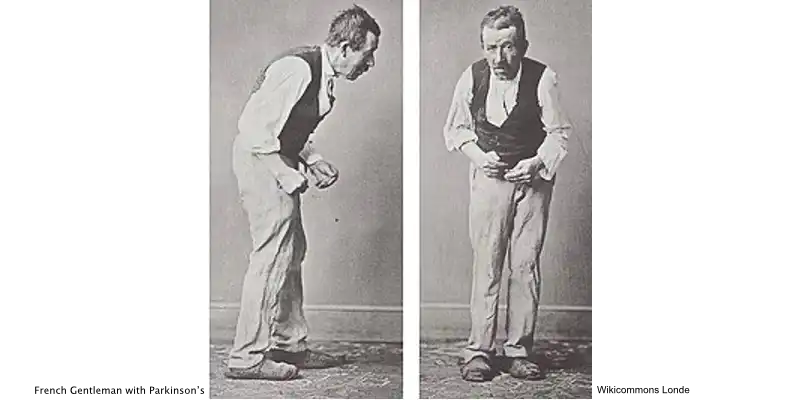Exercise can be as potent as any medicine, in this case preventing Parkinson’s Disease progression.
Doctor David Blacker is a neurologist in Australia. He was a career marathon runner and the height of fitness. By his 40th birthday, he developed persistent pain in his left leg, which he assumed was muscle spasms due to overtraining, or the fact he was just getting older. However, the muscle spasms continued even when he was not running.
He developed a mild tremor in one hand, and stiffness in the mornings. After three years he developed severe spasms in one foot. He characterized it as walking through quicksand. The tremor in his right hand worsened in stressful situations like public speaking.
His handwriting, poor like most physician’s, became illegible at times. He had trouble filling out forms. When he played golf, he had trouble trying to get a ball out of his pocket to put on a tee.
When he finally saw a neurologist, he was diagnosed with Young Onset Parkinson’s Disease. People with YOPD have rapid progression of symptoms and are frequently disabled/retired with 10 years of onset. In comparison with with the average Parkinson’s, patient they will die sooner and the total years of disability is significantly greater.
Blacker stopped distance running, took up boxing, yoga, and brisk walks. He started mild Parkinson’s medication which improved his symptoms. It had few side effects, much of which he attributed to his physical conditioning. He started the Mediterranean diet, which is associated with a low incidence of chronic disease.
Blacker used his illness to begin a crusade to create a more positive picture for Parkinson’s: that progression of the disease could be slowed, or even stopped. He added strength training in anticipation of loss of muscle. It hasn’t happened. He used his own history to encourage people to seek diagnosis earlier than he did.
By the age of 55, he was as physically vigorous as he was at 40 and increased his professional activities as well. He is one of my heroes. (See current activities below)
Dr. Blacker Current Google Gemini Search 4/20/2024
Professor David Blacker is a neurologist at the Perron Institute for Neurological and Translational Science in Australia who specializes in Parkinson’s disease. Blacker has been diagnosed with young-onset Parkinson’s disease and has dedicated his life to improving the lives of people with neurological conditions, particularly stroke and Parkinson’s disease.
Blacker has found that exercise has been very beneficial to him, and has taken up boxing, yoga, and brisk walks. He has also led the FIGHT-PD study of non-contact boxing exercise with Golden Gloves boxing champion Rai Fazio, which has shown the beneficial effect of high-intensity training for people with early-stage Parkinson’s.
Blacker continues to look for therapeutic solutions to relieve suffering and has developed a non-contact boxing program that he has personally found beneficial. He hopes it will help other people living with Parkinson’s, while more treatments are being developed.
Blacker is also an outstanding advocate for the fight against Parkinson’s disease and many others. In 2023, he was nominated in the Professions category of the West Australian of the Year Awards
Symptoms of Parkinson’s disease:
A tremor, typically at rest, but not when you move your hands. It’s called a resting tremor. 30% of people never have a tremor.
Bradykinesia – a slowing of movement, especially repetitive motions like tapping 2 fingers together. It is almost always worse on one side.
Muscular rigidity, much worse than normal aging.
Loss their sense of smell. One can lose much of the ability to dream, and dreams can become hallucinatory. People are prone to depression, anxiety, mood swings, and angry outbursts.
Sources for essay: Australia Daily Mail, UpToDate Medicine, Young-onset Parkinson’s disease: Its unique features and their impact on quality of life (Mehanna)
Written and compiled by Dr James Katz MD MPH

